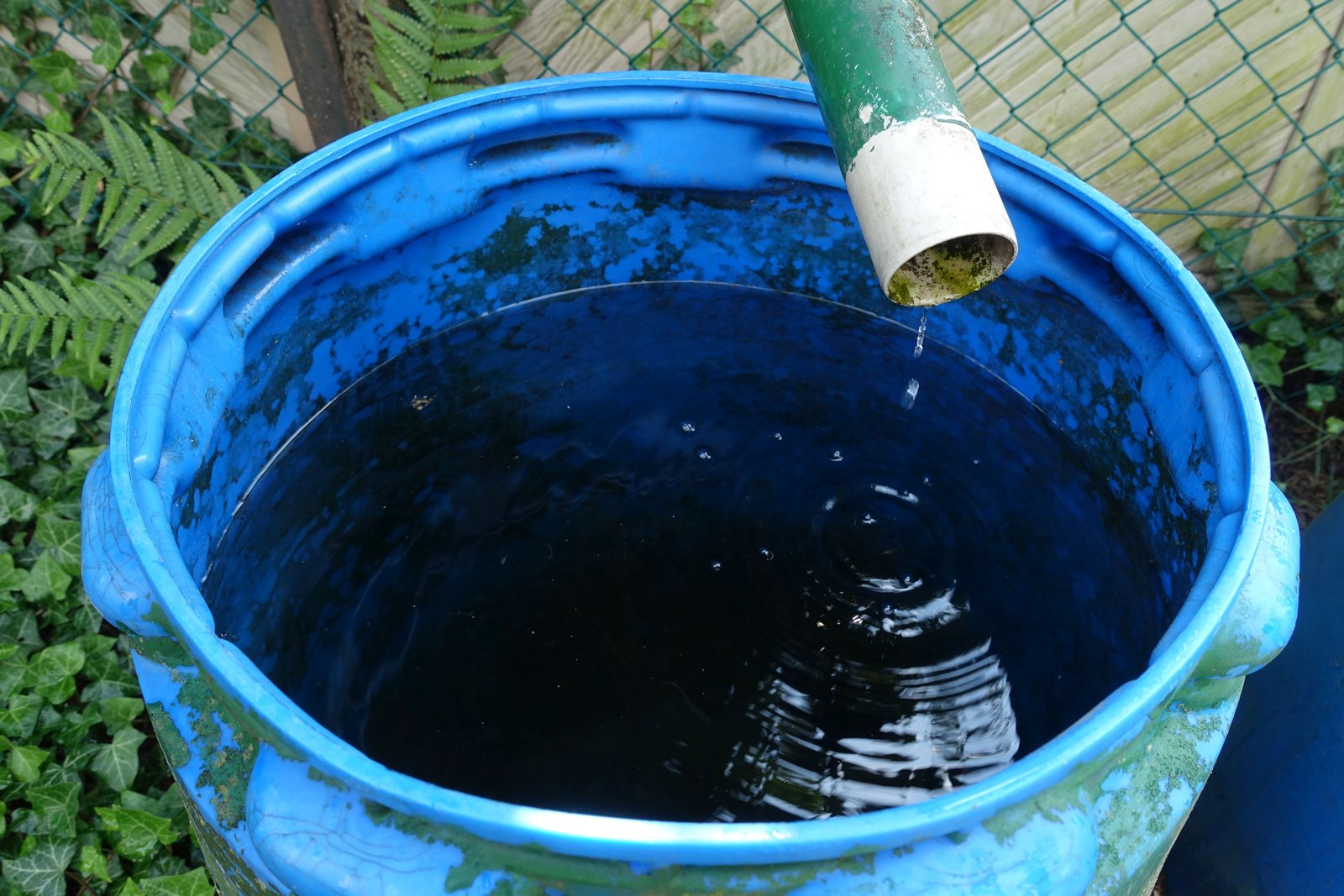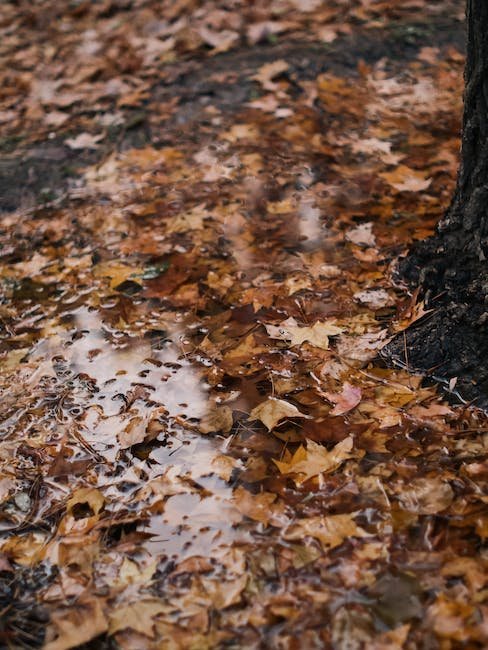Rainwater trickles down from the heavens, glistening droplets that have traveled vast distances through the atmosphere. It carries a whispered promise of life, an invitation to embrace a sustainable existence. As the world grapples with pressing environmental challenges, harnessing the power of rainwater has emerged as a beacon of hope for those seeking to tread lightly upon Earth’s delicate tapestry. In this article, we delve into the art of harvesting rainwater, unveiling the secrets to unlocking its potential and forging a more sustainable way of life. So, grab your buckets and open your minds, for a journey awaits that will reconnect us all to the sacred cycle encompassed within every precious drop.
Table of Contents
- Introduction: Harnessing the Power of Rainwater to Ensure Sustainable Living
- Choosing the Right Rainwater Harvesting System for Your Needs
- Practical Tips for Efficiently Collecting and Storing Rainwater
- Maximizing the Benefits of Collected Rainwater for a Sustainable Lifestyle
- Incorporating Rainwater Harvesting into Everyday Activities for Long-term Sustainability
- Q&A
- Concluding Remarks

Introduction: Harnessing the Power of Rainwater to Ensure Sustainable Living
Rainwater is a remarkable resource that has the potential to revolutionize the way we live sustainably. It is a powerful force of nature that, when harnessed correctly, can not only provide a sustainable source of water but also help reduce our dependence on traditional water sources.
By collecting rainwater, we can take a step towards achieving a greener lifestyle. This simple yet effective practice allows us to utilize a natural resource that is abundant and freely available. Whether it’s for drinking, cooking, irrigation, or household chores, rainwater can be easily harnessed and purified for various uses.
When we harness the power of rainwater, we contribute to the conservation and preservation of our environment. By installing rainwater harvesting systems, we can significantly reduce the strain on freshwater resources while also reducing stormwater runoff, which can cause erosion and pollution in our waterways. Embracing rainwater as a sustainable alternative aligns with our collective responsibility to protect and preserve the planet for future generations.

Choosing the Right Rainwater Harvesting System for Your Needs
When it comes to rainwater harvesting, finding the perfect system for your needs can seem like a daunting task. With a wide range of options available in the market, it’s important to consider various factors before making a decision. Whether you want to collect rainwater for gardening, irrigation, or even drinking purposes, here are a few essential points to consider:
- Water Usage:
- Storage Options:
- System Components:
Start by assessing your water usage needs. Are you looking to water a small garden or do you require a system that can provide water for your entire household? Understanding your needs will help you determine the appropriate size and capacity of the rainwater harvesting system.
Consider the available space on your property and choose a storage option that suits your requirements. From above-ground tanks to underground cisterns, each option has its own pros and cons. Assess factors like maintenance, aesthetics, and convenience before making a decision.
Look into the various components that make up a rainwater harvesting system, such as gutters, downspouts, filters, diverters, and pumps. Understanding how these components work together and their importance in the overall system will help you select the right system for your needs.
By considering these crucial factors, you can make an informed decision and choose a rainwater harvesting system that aligns perfectly with your needs, ensuring that you can make the most of this sustainable water source for years to come.

Practical Tips for Efficiently Collecting and Storing Rainwater
Rainwater harvesting is a sustainable and cost-effective way to conserve water and reduce reliance on traditional sources. Below are some practical tips to help you efficiently collect and store rainwater:
- Choose the right collection method: Depending on your needs and space availability, you can opt for various rainwater collection methods. These include rain barrels, cisterns, or even large tanks. Ensure that you select a collection system that suits your requirements and the amount of rainwater you anticipate collecting.
- Maximize roof surface area: The larger the roof area, the more rainwater you can harvest. When planning your collection system, consider maximizing your roof surface area by adding gutters or extensions to capture as much rainfall as possible.
- Maintain proper filtration: It is essential to filter the collected rainwater to remove debris, dirt, and potential pollutants. Use a well-maintained pre-filtering system, such as a mesh screen, to prevent unwanted particles from entering your storage tanks or barrels.
- Store rainwater safely: To ensure the longevity and quality of your stored rainwater, it is crucial to store it properly. Keep your storage containers covered to prevent mosquito breeding and minimize evaporation. Additionally, choose food-grade storage containers that are UV-resistant to maintain the water’s cleanliness.
- Regular maintenance: Regularly inspect your collection and storage system to identify and fix any issues. Clean the gutters, remove debris, and perform routine checks on your filtration system and storage containers to keep the system functioning optimally.
By implementing these practical tips, you can efficiently collect and store rainwater, promoting sustainability and reducing your environmental impact. Remember, every drop counts!
Maximizing the Benefits of Collected Rainwater for a Sustainable Lifestyle
Importance of Rainwater Collection
Collecting and utilizing rainwater is a simple yet powerful way to embrace sustainability and reduce our reliance on traditional water sources. By implementing rainwater collection systems, we can tap into this abundant natural resource and make a positive impact on the environment.
1. Conserving Precious Water Resources: With water scarcity becoming an increasing concern in many regions, rainwater collection allows us to use this freely available resource instead of depleting precious groundwater or relying on energy-intensive desalination processes.
2. Saving on Water Costs: Embracing rainwater collection can lead to significant savings on water bills. By utilizing collected rainwater for activities such as irrigation, car washing, and toilet flushing, we reduce our demand on municipal water supplies.
3. Supporting Ecosystems: Rainwater collection also benefits the surrounding ecosystems. By reducing stormwater runoff, we prevent pollutants from entering rivers and lakes, maintaining the health of aquatic life and preserving valuable ecosystems.
Incorporating Rainwater Harvesting into Everyday Activities for Long-term Sustainability
Looking for ways to contribute to long-term sustainability? Incorporating rainwater harvesting into your everyday activities is a simple yet impactful solution! By harnessing the power of nature’s gift, you can not only conserve precious water resources but also reduce your reliance on traditional water sources. Let’s explore some innovative ways to integrate rainwater harvesting into your daily routine:
- Watering your garden: Instead of using tap water, collect rainwater in large barrels or tanks during rainy days. This natural water can then be used to nourish your plants, reducing your overall water consumption.
- Flushing toilets: Install a separate rainwater collection system specifically designed to supply water to your toilets. By routing rainwater directly to the bathroom, you can significantly conserve potable water.
- Washing clothes: Rainwater is gentle on fabrics and free from harsh chemicals, making it ideal for laundry purposes. Create a plumbing system that allows rainwater to be used in your washing machine, reducing your reliance on treated water.
- Household cleaning: Rainwater is not only safe but also cost-effective for everyday cleaning tasks. Use collected rainwater for mopping floors, washing windows, or even watering indoor plants.
By incorporating rainwater harvesting into these everyday activities, you can make a significant positive impact on the environment. Embrace this sustainable practice and join the movement towards ensuring a greener and more water-resilient future!
Q&A
Can I use rainwater for drinking?
No, rainwater is not safe for direct consumption without proper treatment. It can be used for non-potable purposes such as watering plants, washing clothes, or flushing toilets.
Do I need any special equipment to harvest rainwater?
You will need a rain barrel or a larger, more sophisticated rainwater harvesting system. Additional equipment may include gutters, downspouts, and a filtration system to ensure the water is clean and free from debris.
How much rainwater can I collect?
The amount of rainwater you can collect depends on the size of your harvesting system and the volume of rainfall in your area. On average, 1 inch of rainfall collected from a 1,000-square-foot roof can yield around 600 gallons of water.
Can I use rainwater to reduce my water bill?
Absolutely! By harnessing rainwater, you can significantly reduce the demand for tap water, resulting in lower water bills and more sustainable water usage in your home.
Is it legal to harvest rainwater?
Rainwater harvesting is legal in most places, but certain regulations or permits may be required, especially in areas with high water scarcity. It is always recommended to check local ordinances and regulations before installing a rainwater harvesting system.
What are the environmental benefits of harvesting rainwater?
Harvesting rainwater helps reduce the strain on freshwater sources and can contribute to the conservation of natural resources. It also helps decrease stormwater runoff, reducing the risk of localized flooding and erosion in urban areas.
What steps can I take to maintain my rainwater harvesting system?
Regular maintenance includes cleaning gutters and filters to prevent clogging, inspecting for leaks or cracks, and controlling mosquito breeding by covering openings or using larvicides. Additionally, it’s important to periodically test the quality of harvested rainwater to ensure it remains suitable for its intended uses.
Concluding Remarks
As we reach the end of this rain-kissed journey, we hope you feel infused with inspiration to embark upon a sustainable lifestyle that echoes the gentle rhythms of the natural world. Harnessing the power of rainwater not only quenches our thirst for self-sufficiency but also nurtures our planet’s unyielding beauty.
By unveiling the secrets of rainwater harvesting, we’ve uncovered a transformative path that leads us towards a harmonious coexistence with Mother Earth. It is a dance of reciprocity, where every droplet saved blooms into a vibrant tapestry of resilience and bounty.
Now, armed with knowledge and armed with passion, we are faced with a choice. A choice to not only tread gently upon this Earth but to create a legacy of boundless positivity and conscious living. Each action we take ripples through the vast tapestry of existence, and the choice to embrace rainwater harvesting resonates far beyond our immediate realm.
So, as you craft your own sustainable oasis, remember the simplicity in the complexity. The moments shared beneath the rhythmic patters of raindrops will weave seamlessly into your daily life, gently reminding you of the profound impact even the smallest choices can have.
For today, we bid you farewell, fellow disciples of sustainability. May the rain forever bless your endeavors, and may your commitment to living lightly upon this Earth inspire others to join this radiant symphony of change. Farewell… until we meet again under stormy skies, ready to embrace a future drenched in the beauty of rainwater love.
As an affiliate, my content may feature links to products I personally use and recommend. By taking action, like subscribing or making a purchase, you’ll be supporting my work and fueling my taco cravings at the same time. Win-win, right?
Want to read more? Check out our Affiliate Disclosure page.